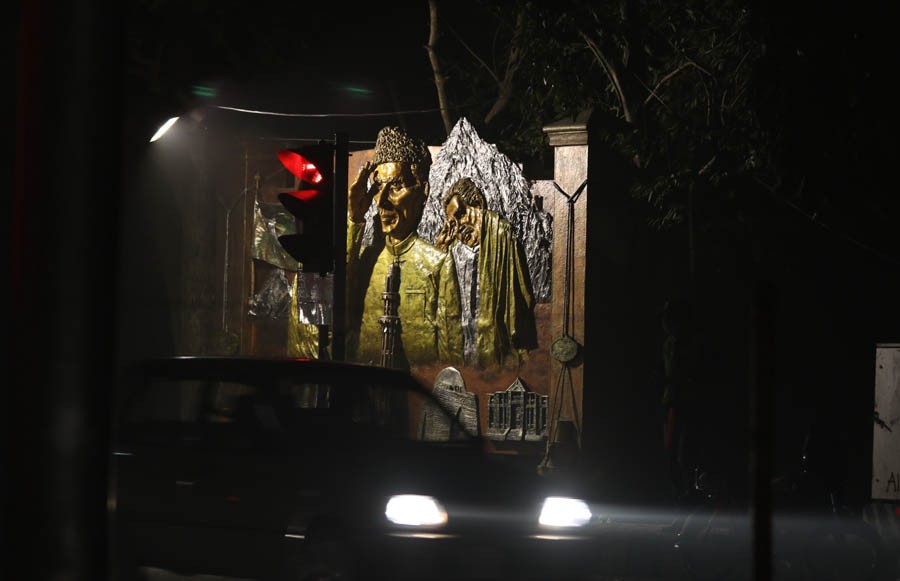
Drive carefully or you’ll get e-challans at home for 24 different types of traffic violations. Security cameras shall capture photos as proof

It was 10 in the morning. Zahid Mahmood was having breakfast when someone knocked at his door. He had no idea who could it be. As he got up from the table and opened the door to greet the unexpected guest, he found a representative of a courier service with an envelope and a receipt to be signed by him.
Mahmood got curious, so he opened the envelope right there, only to find a warning ticket from the City Traffic Police. As per the details mentioned on the slip (called e-challan), he had violated a traffic signal; a camera installed on the road had captured the ‘moment.’ He could see his car and its number plate featured prominently in the image. The car had just crossed the traffic signal that was red.
The chasis number and other details of the car were also printed on the slip.
The fact is that the City Traffic Police Lahore (CTPL) has adopted the model of advanced countries of the world. Warning messages are sent to violators’ homes, and now you don’t have the ‘comfort’ of violating traffic rules/signals just because there is no warden around, or bribe or argue with the officials in order to evade being challaned. Because the proverbial big brother is watching you.
TNS contacted Rai Ijaz Ahmad, City Traffic Officer (CTO), Lahore, to get details about the initiative. He said that around 20,000 traffic violation warning tickets had been issued to citizens of the metropolitan city over the past four weeks. "The idea is to make them [the people] realise that they are being watched.
"We wanted to first familiarise them with the concept, and then start to actually fine them at a later stage," he adds. "The e-challans have been sent to the vehicles’ owners whose names are mentioned in the records of the Excise and Taxation Department as well as the registration papers."
The violations are captured in the cameras installed by the Punjab Safe City Authority (PSCA) across the city. The challans are issued for committing 24 types of violations such as overspeeding, disobeying traffic signals, driving vehicles without proper lights, using mobile phone while driving, rash driving, riding a motorbike without wearing helmet, having more than two people riding the bike, not following the rules about lane and zebra crossing, etc. Once the warning phase is over, the owner of the vehicle shall receive instructions to pay the fine. The fine amount will double if not paid within 15 days of the issuing date.
There is a rub. What if a person sells his vehicle to the other person and the latter hasn’t transferred the vehicle ownership to his name? Who will receive the e-challan, in that case, and pay the fine?
According to the CTO, the e-challan shall be sent to the person whose name and address are mentioned with the Excise & Taxation Department regardless of the shift in the ownership of the vehicle.
The system is also supposed to identify the people who are using cars without getting their ownership transferred. The person receiving the e-challan in this case shall thus come under pressure and make sure that the buyer of his vehicle gets the ownership transferred without delay.
Under the rules, one has to ensure the transfer within 15 days of sale of the vehicle.
It is also learnt that Hand Held Devices (HHDs) have been provided to traffic police officers who shall be deputed at different points of the city. They shall take photos where there are no cameras installed, and issue e-challans over violations witnessed with the help of their devices.
Muhammad Musa, a businessman who has enough knowledge about the new system, hopes the people shall start respecting traffic rules now. "The general public does not have any traffic sense," he declares.
Highlighting the different aspects of the system, Musa says that in the event of an e-challan, the violator shall not have to stand in long queues or travel to a distant place to pay the fine. "There will be options to pay online, through the Automated Teller Machines (ATMs) of any branch of the Bank of Punjab."
He also says that the boys who indulge in one-wheeling shall now be identified easily through the system. "If e-challans arrive at their doorstep, their parents/guardians shall get to know about what reckless activity they unleashed on the roads, and may also take action against them."
The PSCA has already installed Automated Number Plates Recognition (ANPS) cameras in Lahore. The cameras read the number plates and help the department issue e-challans in cases of any traffic violations. Muhammad Tayyab, the spokesperson of PSCA, reveals that over the last one week, "around 100,000 violations by bikers have been observed by the Authority."
He also says that the PCSA has set up a Punjab Police Integrated Command, Control and Communication System (PPIC3) which issues e-challans after catching the traffic violators on cameras installed at different point on the city roads. "This happens automatically, but an e-challan is issued only after manual checking and verification."
Those who feel they were wrongly issued the e-challan can move court, but they will have to keep in mind that the image of the vehicle with its number plate, the place where the violation happened and at what time, are all mentioned on the slips. So, it will be difficult for anyone to contest them.
There are suggestions that the e-challan system should be linked to the National Data and Registration Authority (NADRA) and Lahore Electric Supply Corporation (LESCO) to make it more effective. If the challan is not paid within the given time, the electricity supply of that person could be disconnected. But, right now, it is not clear whether the government is going to get that tough or not.